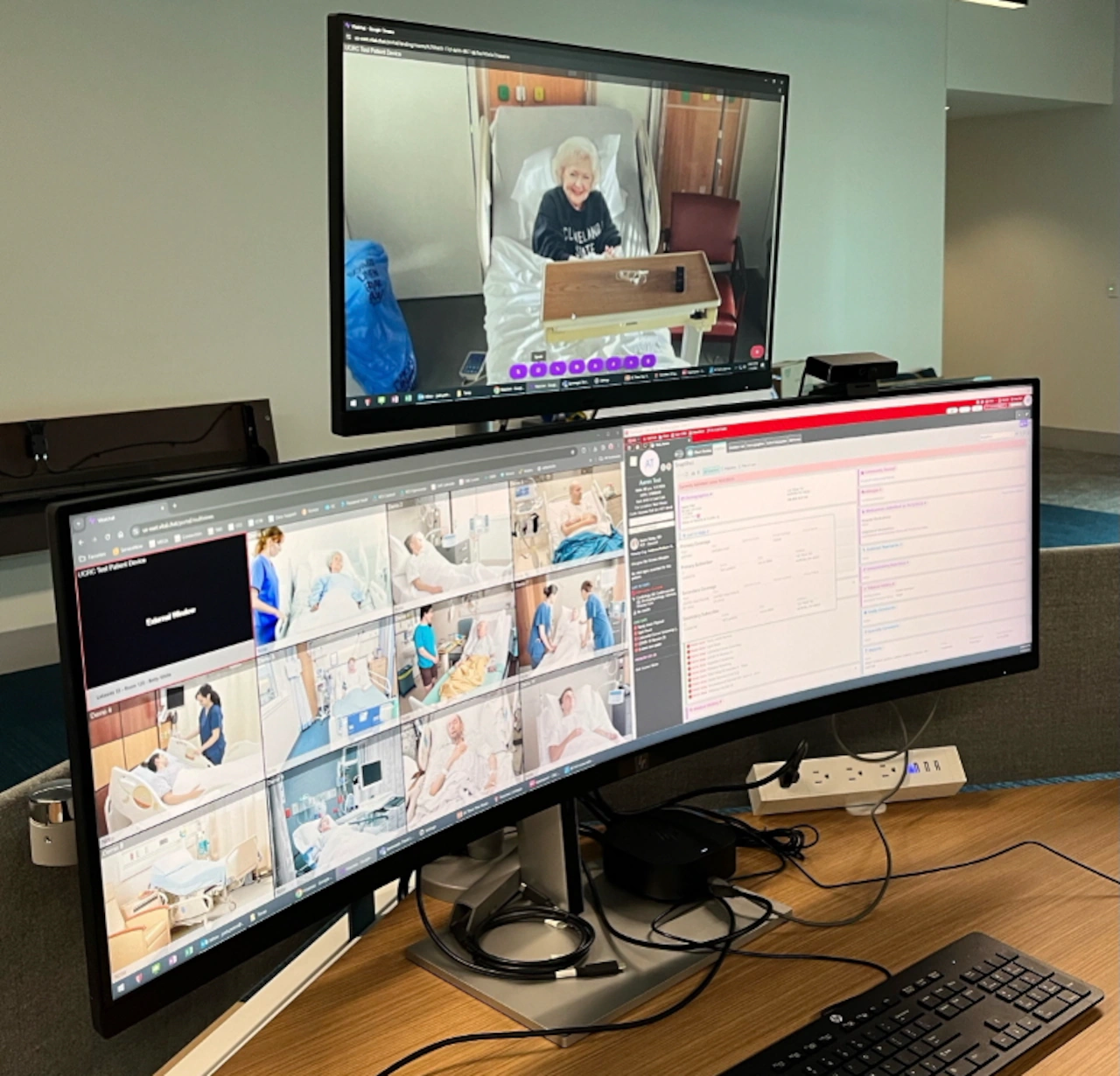
CLEVELAND, Ohio — University Hospitals Lake West is one of the first hospitals in the nation to have virtual nursing throughout the facility using Zoom-style video-call technology, UH recently announced.
While stationed in an administrative building miles away, a virtual nurse can ask the patient for health information, fill out admission forms and give updates on when procedures will take place.
The program, called the Connected Care Team Platform, has been rolling out across some UH hospitals since last year.
UH plans to expand virtual nursing to all of its nearly 3,000 beds over the next three to four years. The expansion will include broadening its use into the emergency department and operating room.
The idea isn’t to replace bedside nurses, but to support them and improve care, UH said.
The Phase 1 test of UH’s virtual nursing program began in May 2024, with medical and intensive care departments at UH Elyria, Lakeside, Rainbow Babies and Children’s and Lake West. More than 55 virtual nurses took part in this testing phase.
Connected Care came to UH Parma’s emergency department in April.
The system has been more efficient for admissions, discharges, pain assessments and falls prevention, the health system said.
“The success of Phase 1 gave us the confidence to expand to a whole-hospital launch,” said Brian Nelson, program lead for the Veale Healthcare Transformation Institute at UH. “This isn’t just about technology; it’s about supporting every patient in every room with high-quality care and easing the burden on our caregivers.”
At UH, departments using the Connected Care Team Platform designate one nurse from that floor each day to be the virtual nurse for that floor’s patients. Nurses rotate between working in their hospital department and the remote virtual nurse location, the health system said.
Inside an administrative building, virtual nurses sit in front of three screens showing multiple patients and their electronic health records.
The number of patients that a virtual nurse monitors at one time varies by department, and these nurses are not monitoring all rooms simultaneously, UH said.
Patient rooms outfitted for virtual nursing have two-way audio and video technology. A camera in the room can spin 360 degrees, see a sleeping patient in a dark room, and magnify images to such a high degree that the virtual nurse can double-check the label on a bottle of medications.
“The Connected Care Team is exactly the kind of bold innovation the Veale Healthcare Transformation Institute was created to champion,” said Dr. Peter J. Pronovost, UH chief quality & clinical transformation officer. “By reimagining how nurses deliver care, UH is proving it’s possible to simultaneously ease workforce strain, improve safety, and elevate the patient experience.”
Virtual nursing is UH’s response to the nursing shortage. Nationally, the country will have only 91% of the registered nurses it needs by 2030, according to government data.
The Cleveland Clinic, MetroHealth System and Summa Health are also experimenting with similar virtual nursing programs.



